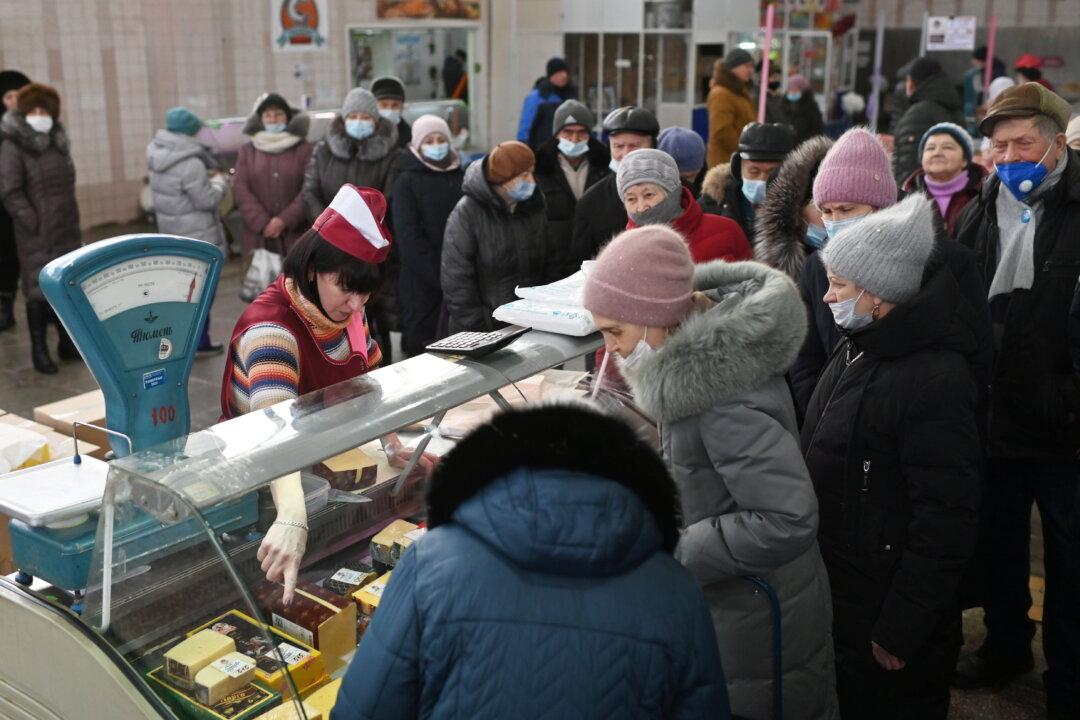Food prices have surged in Russia to levels exceeding the rate of food price inflation throughout the Western bloc, forcing Russians to spend an unusually high portion of their personal income on food as the country continues its war in Ukraine.
In remarks to reporters from Reuters, the director of the United Nations food agency’s Russian liaison said that Russian citizens were spending an average of 40 percent of their disposable income on food, which constitutes twice as high a share of proportional spending on food as prior to the invasion.





